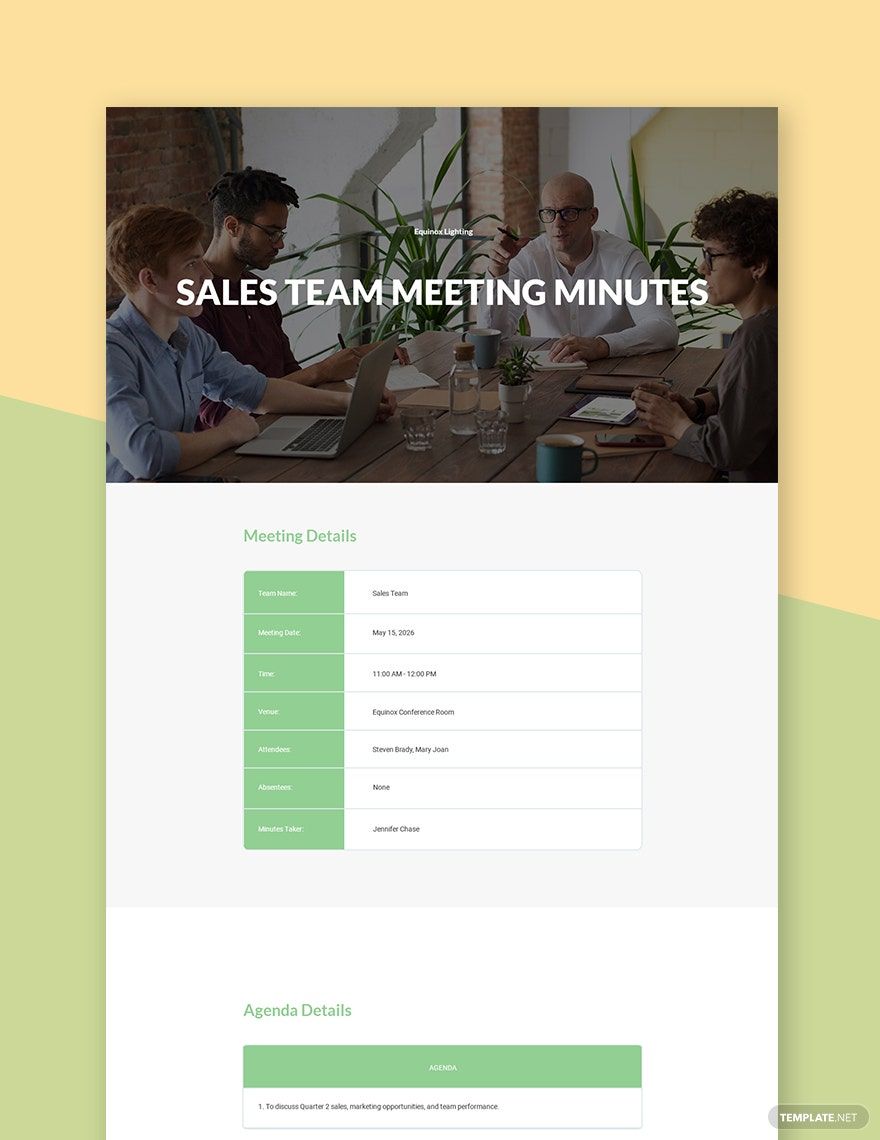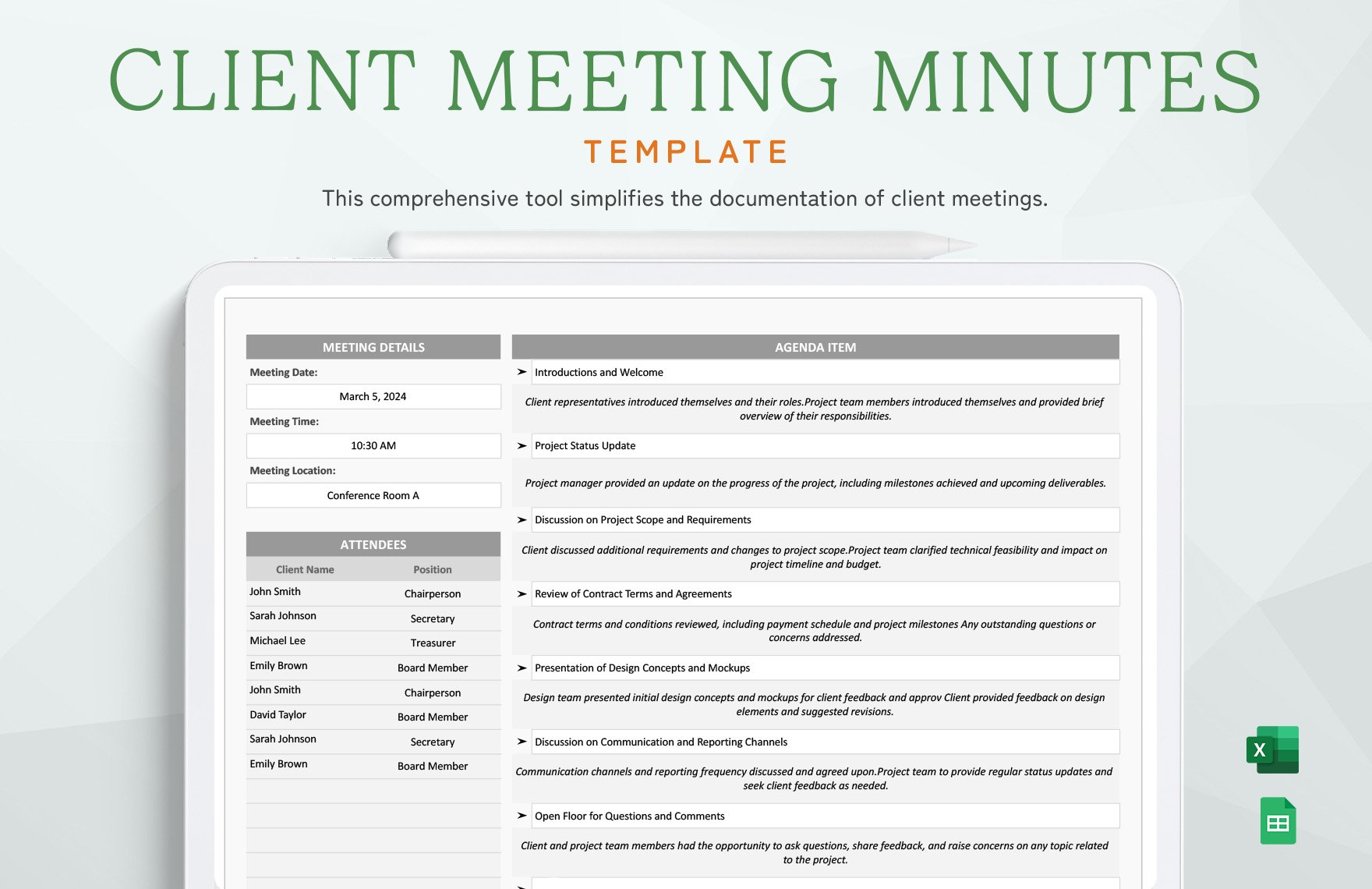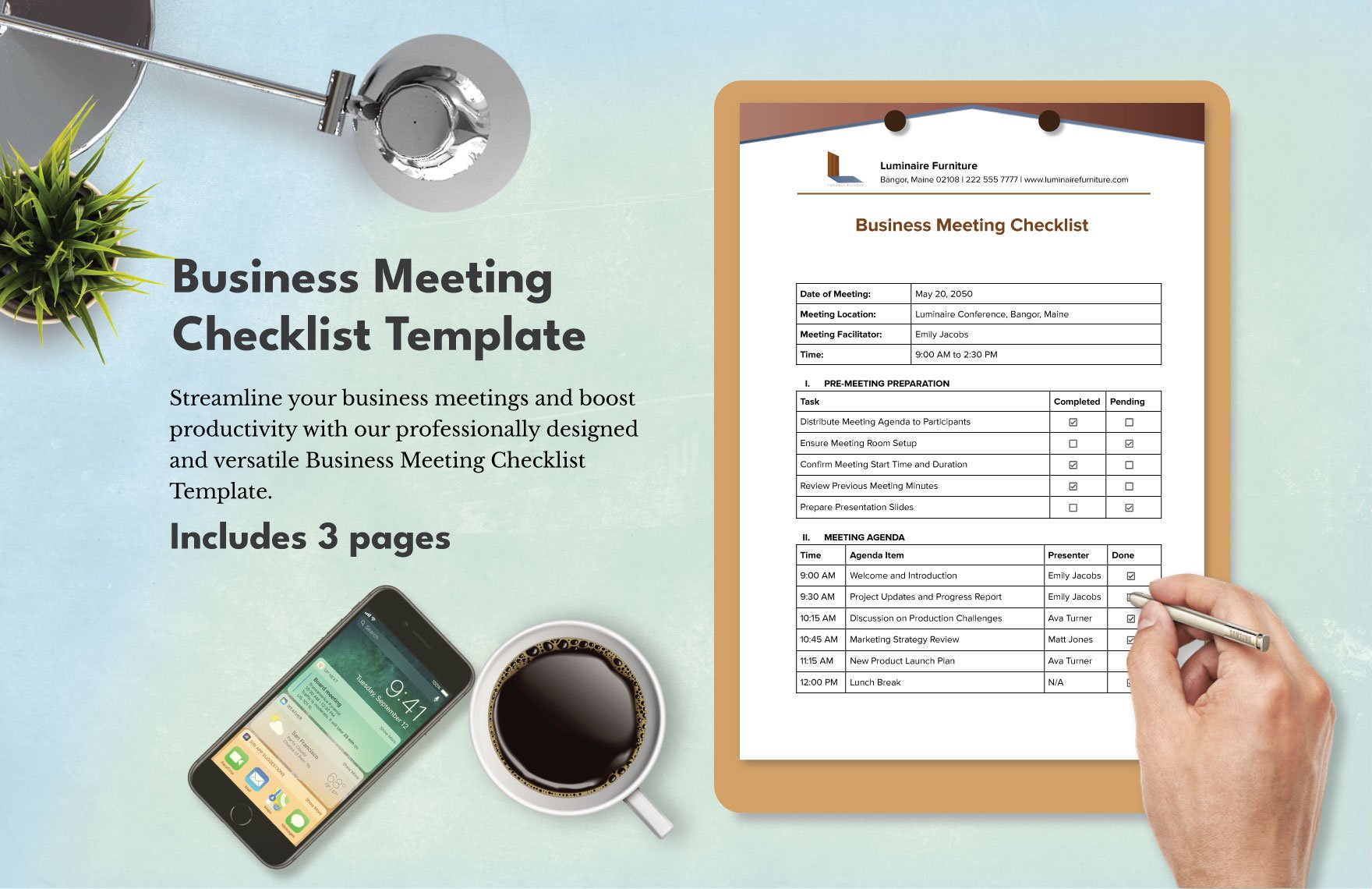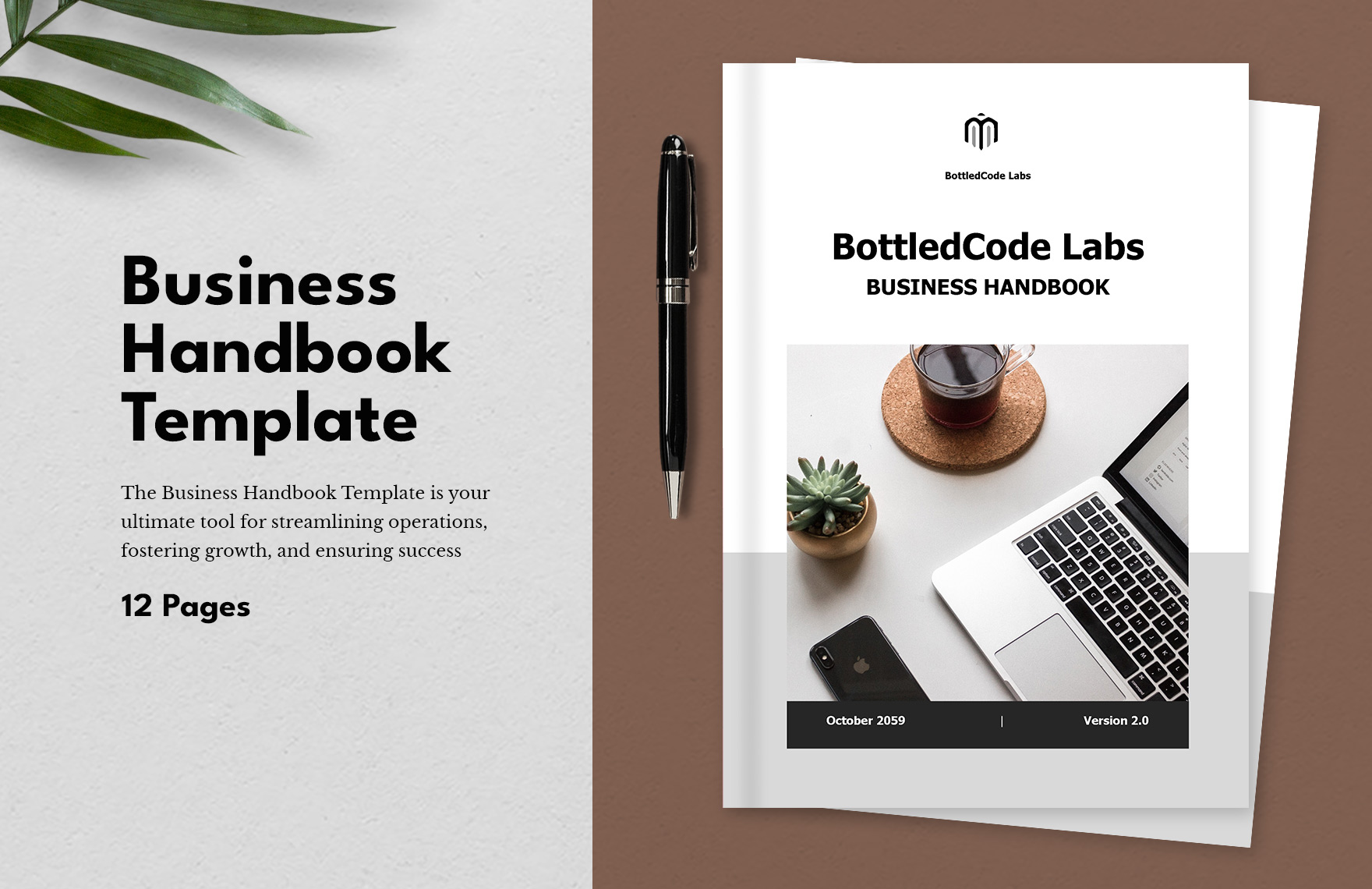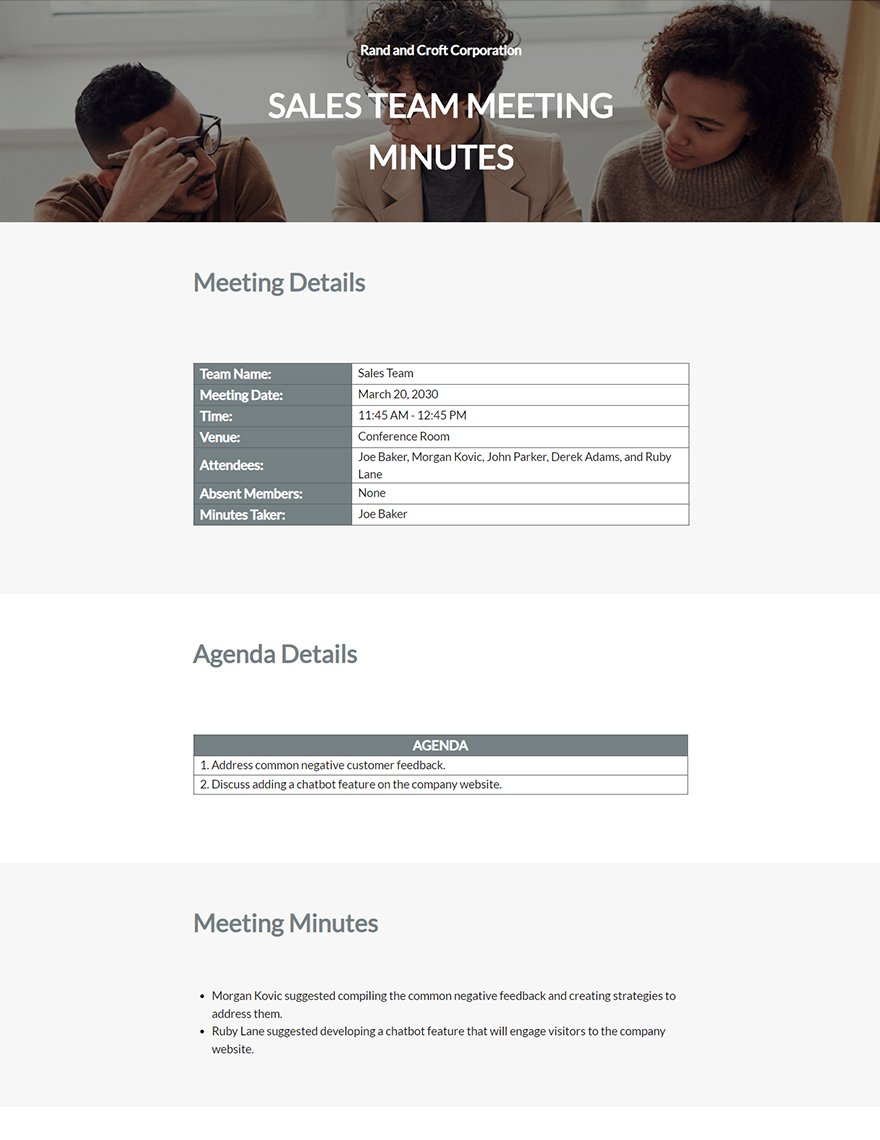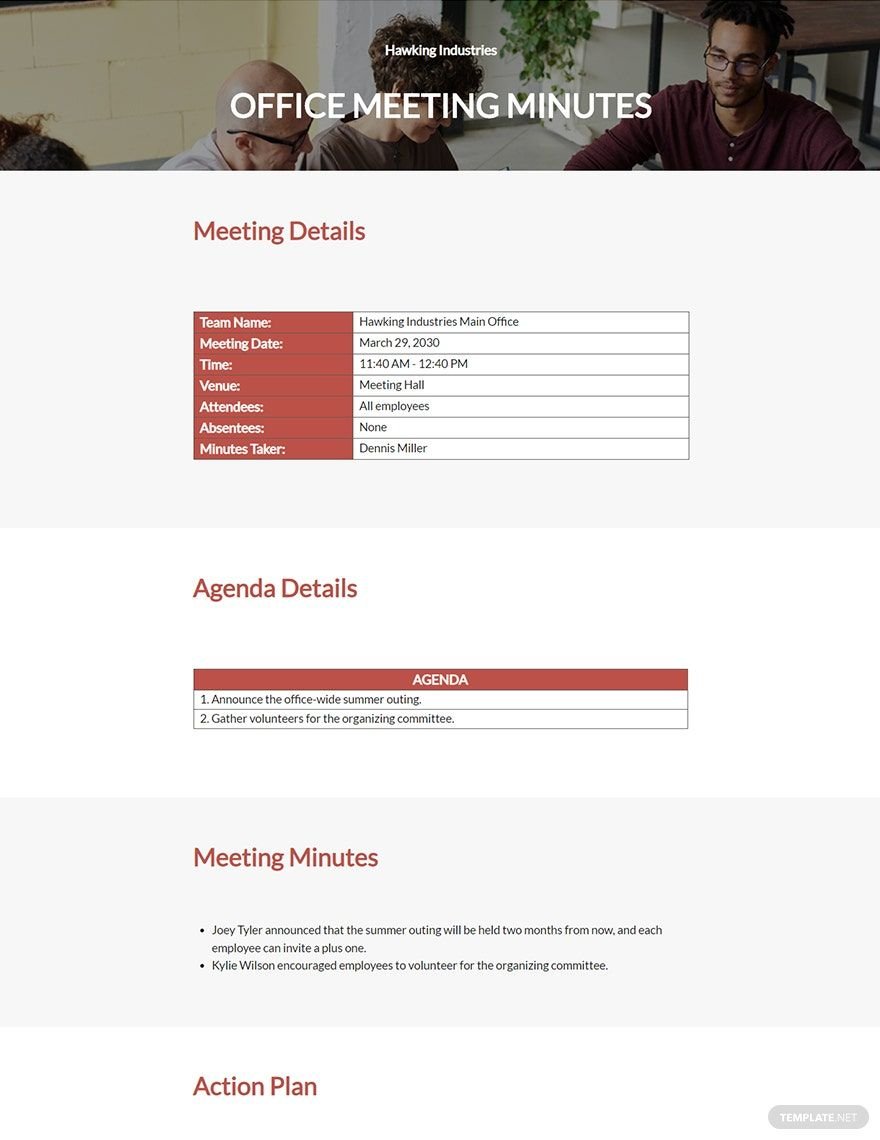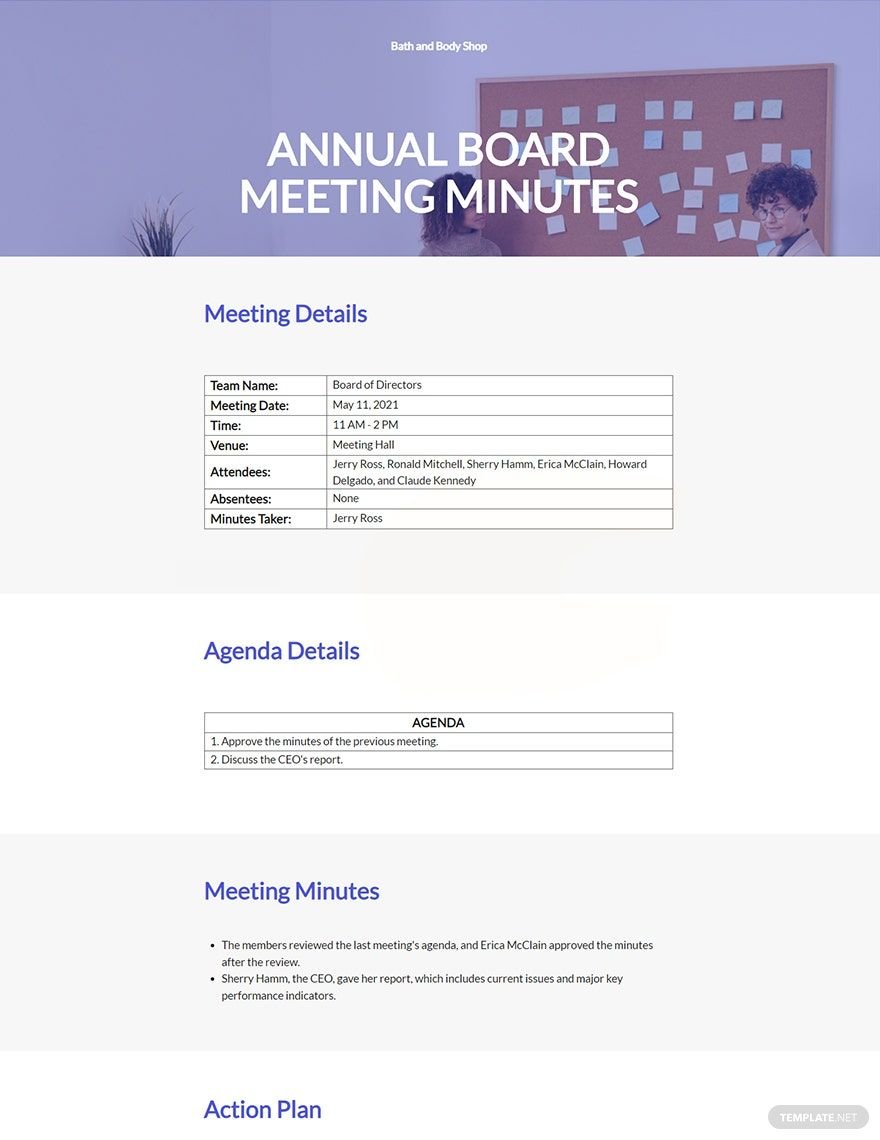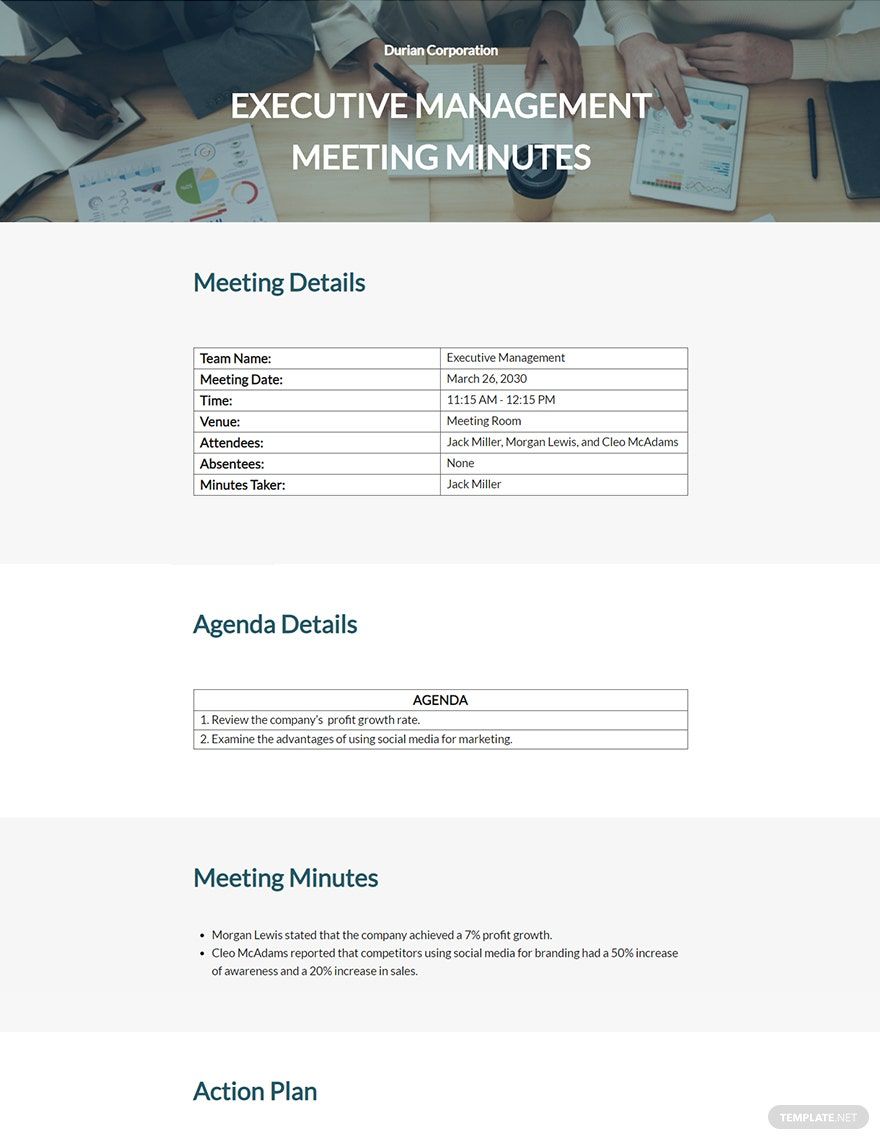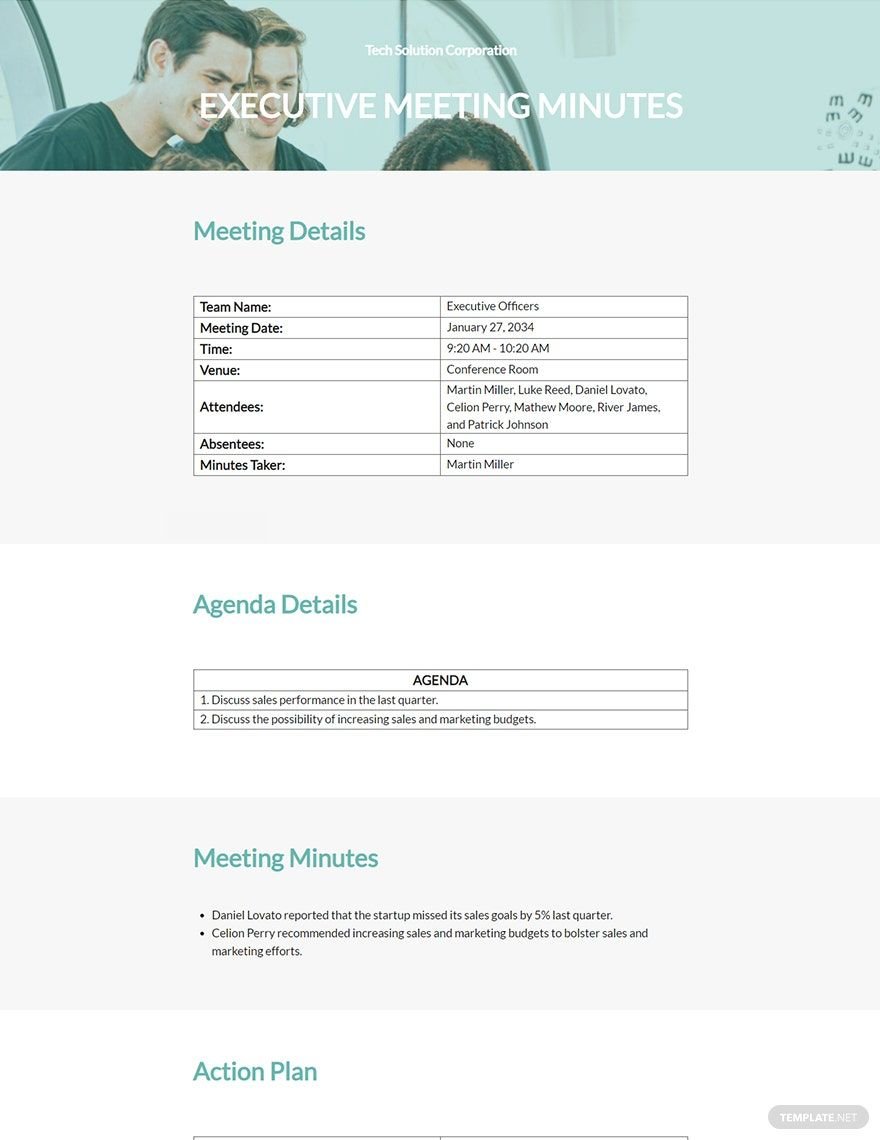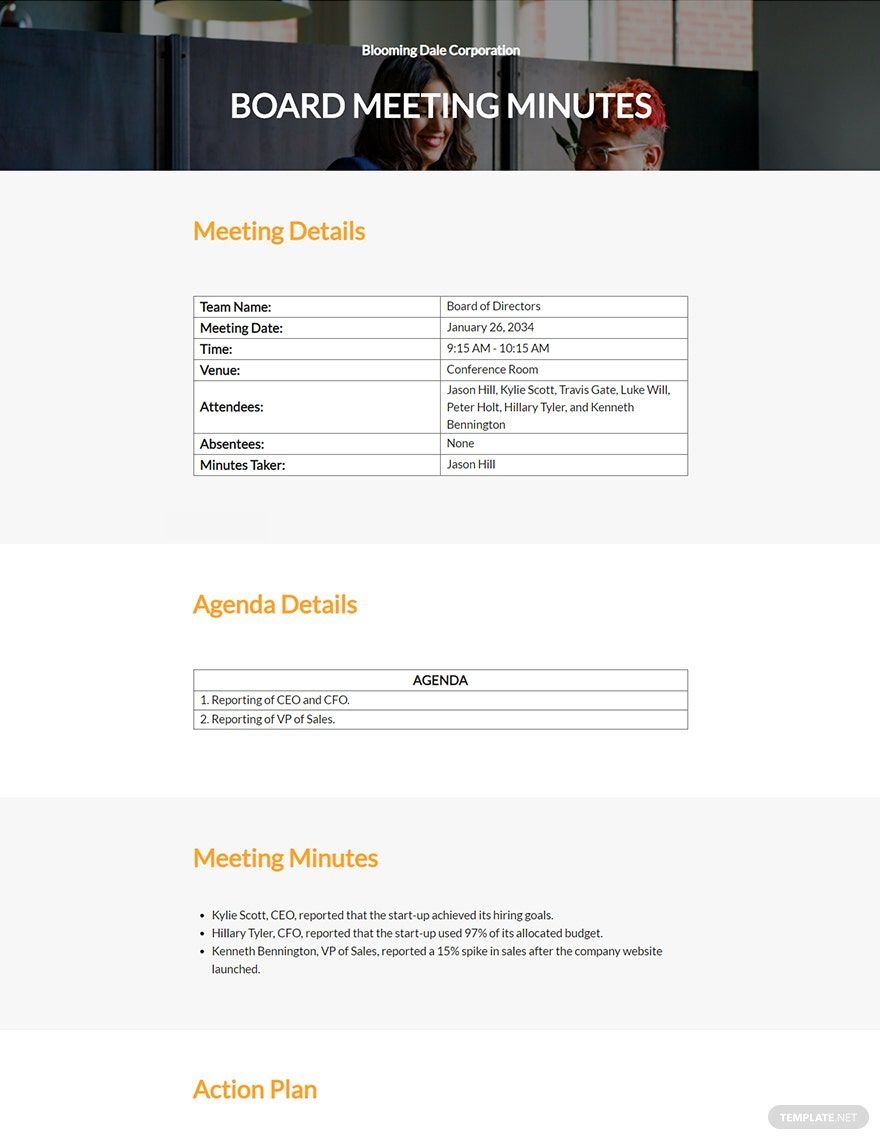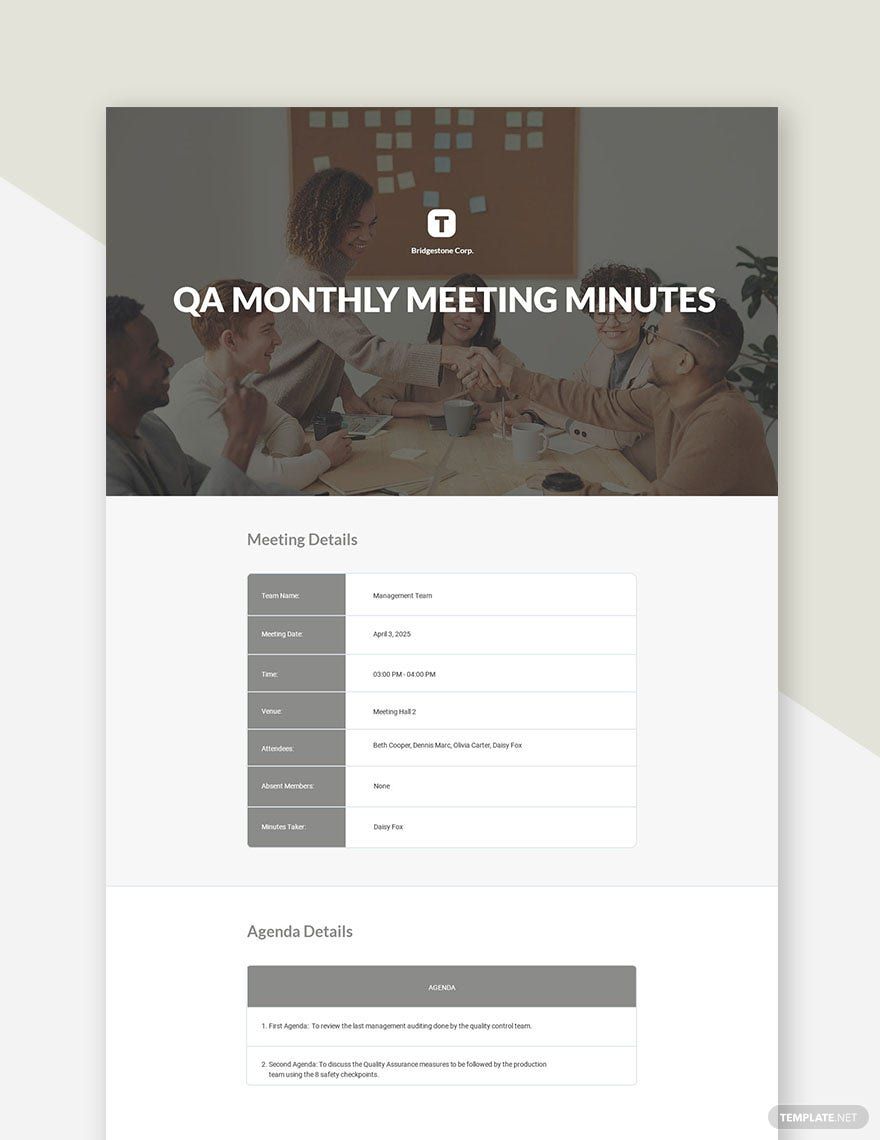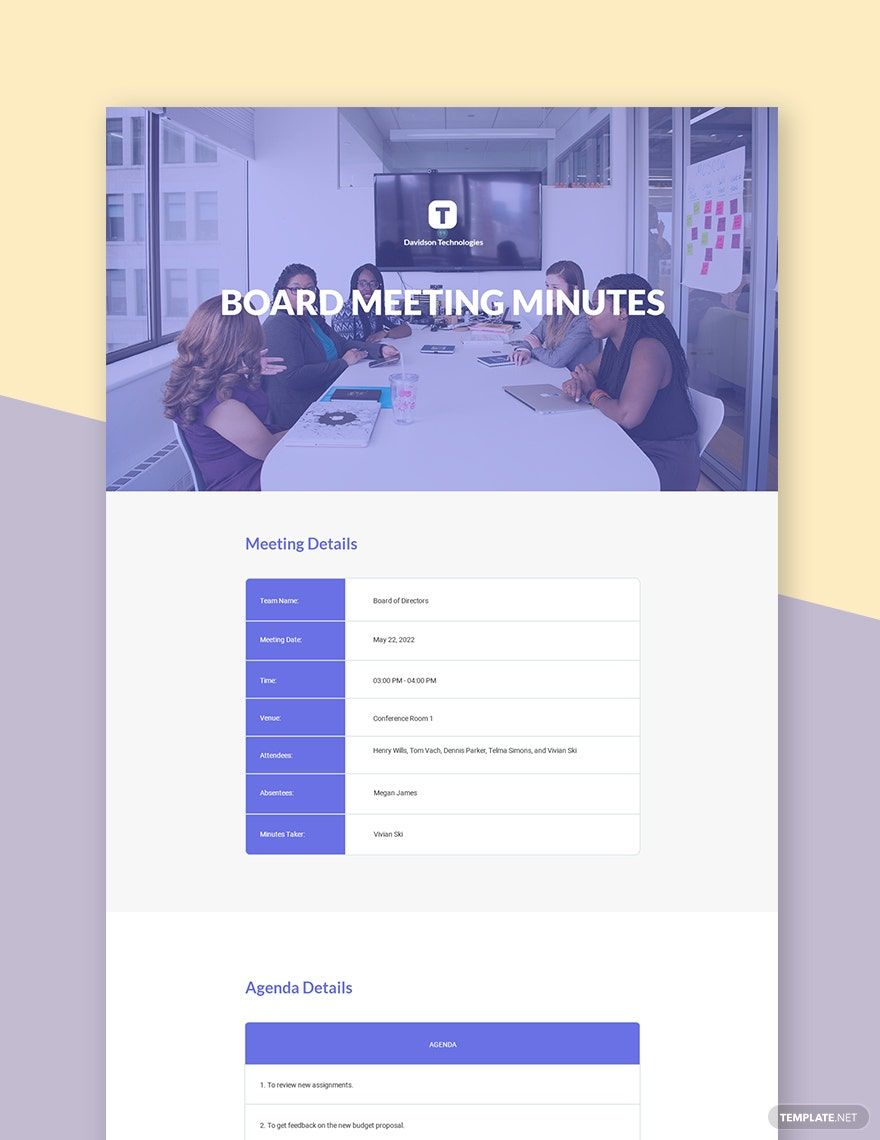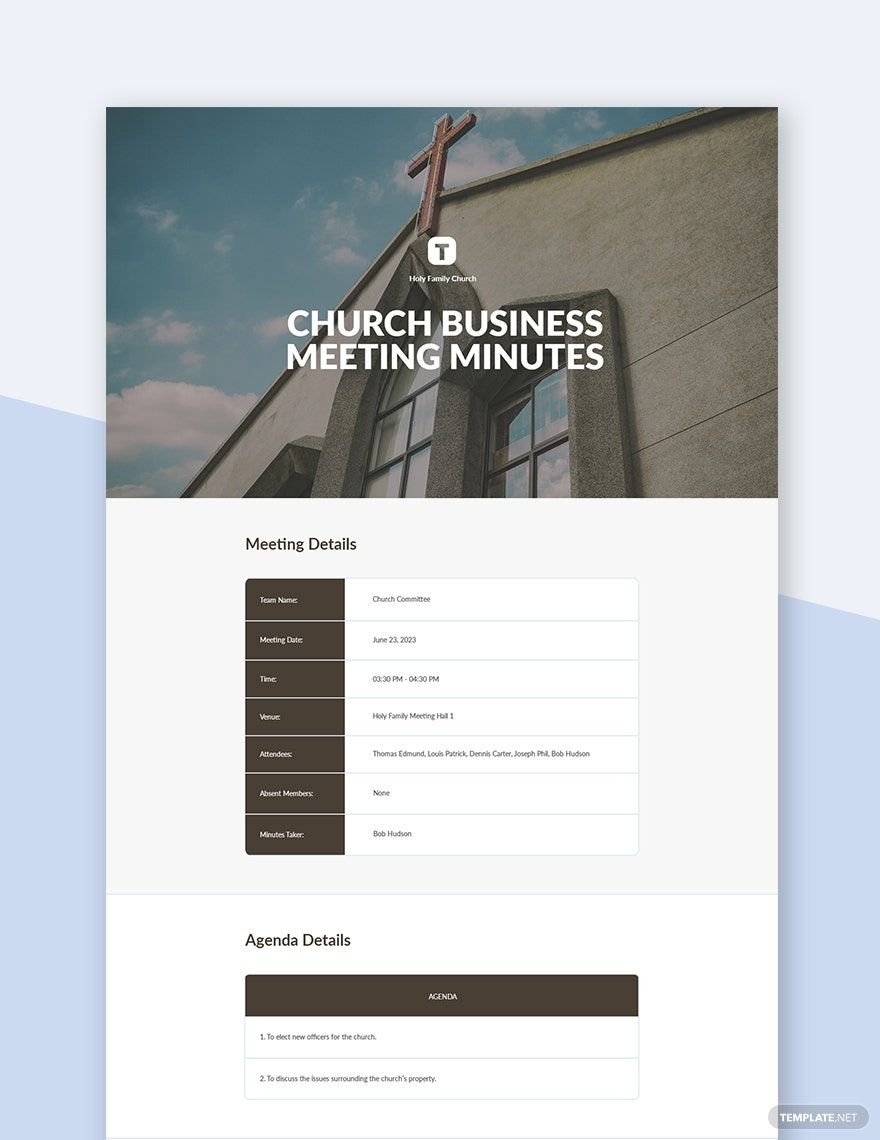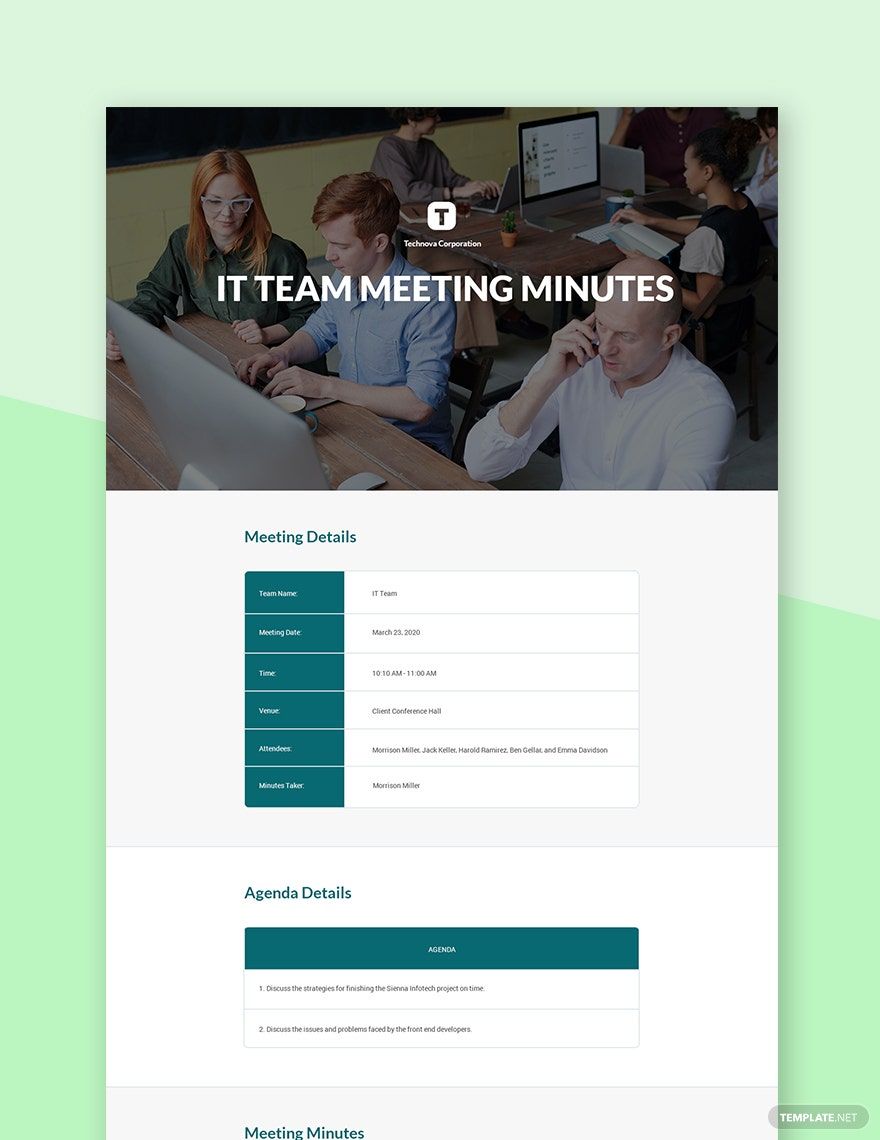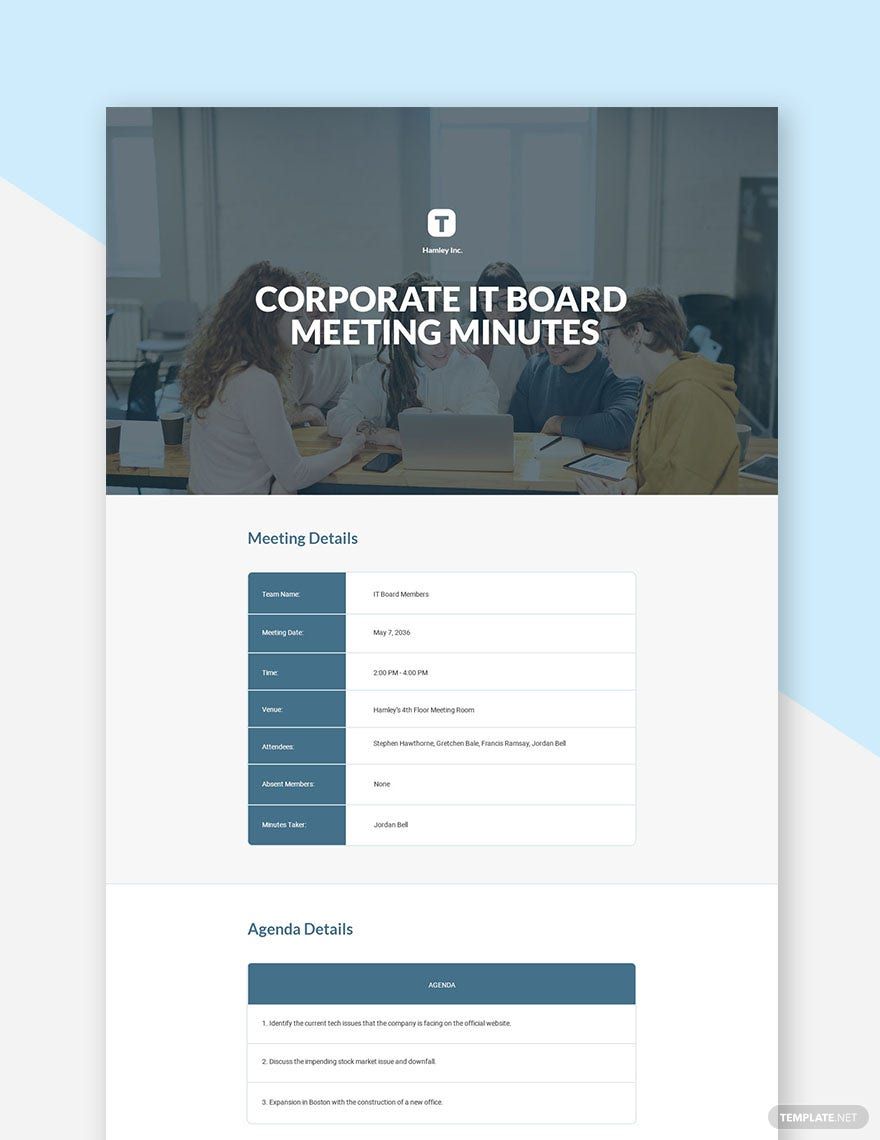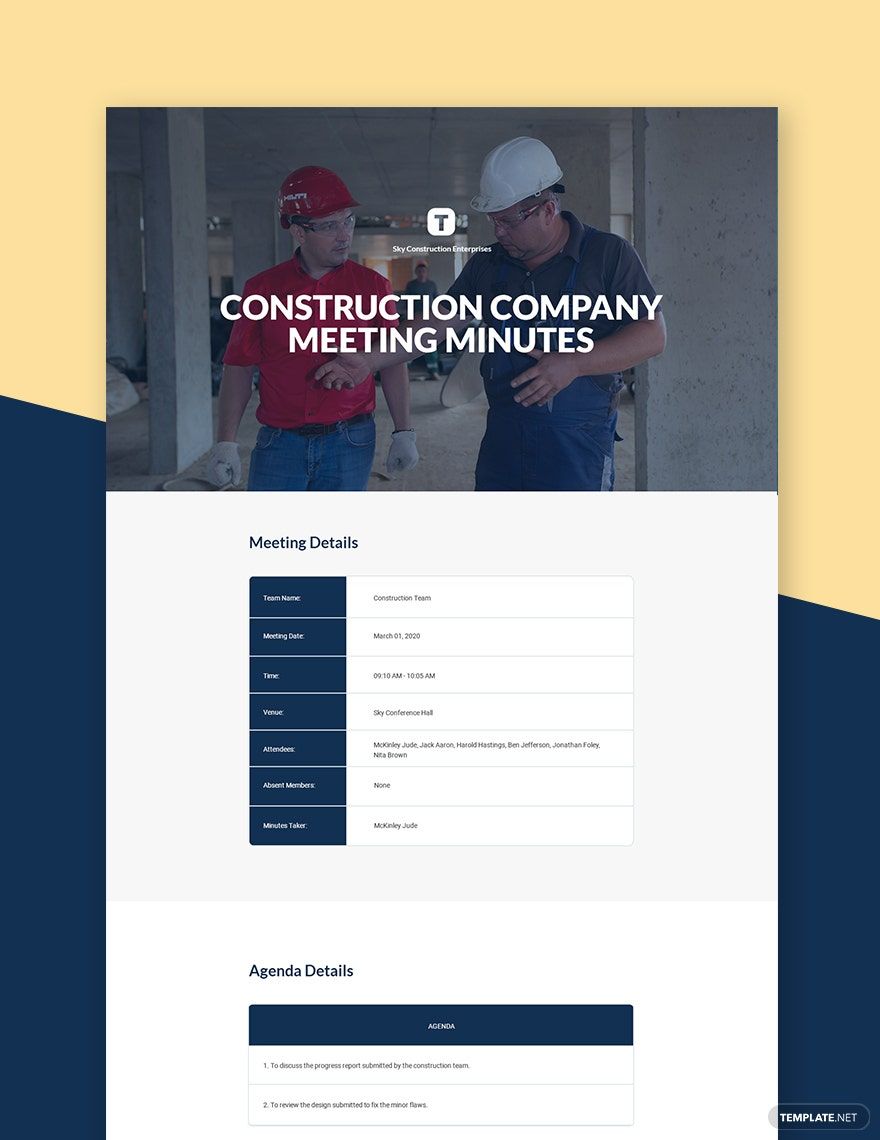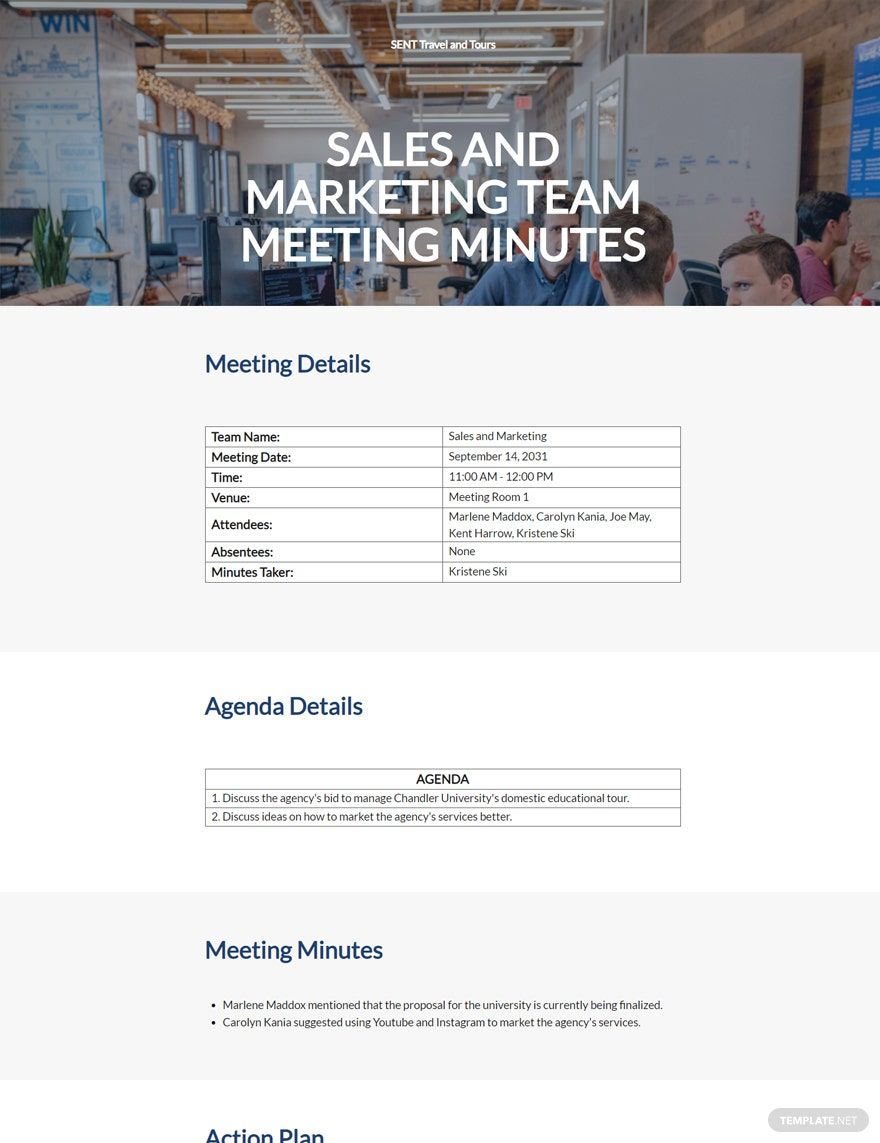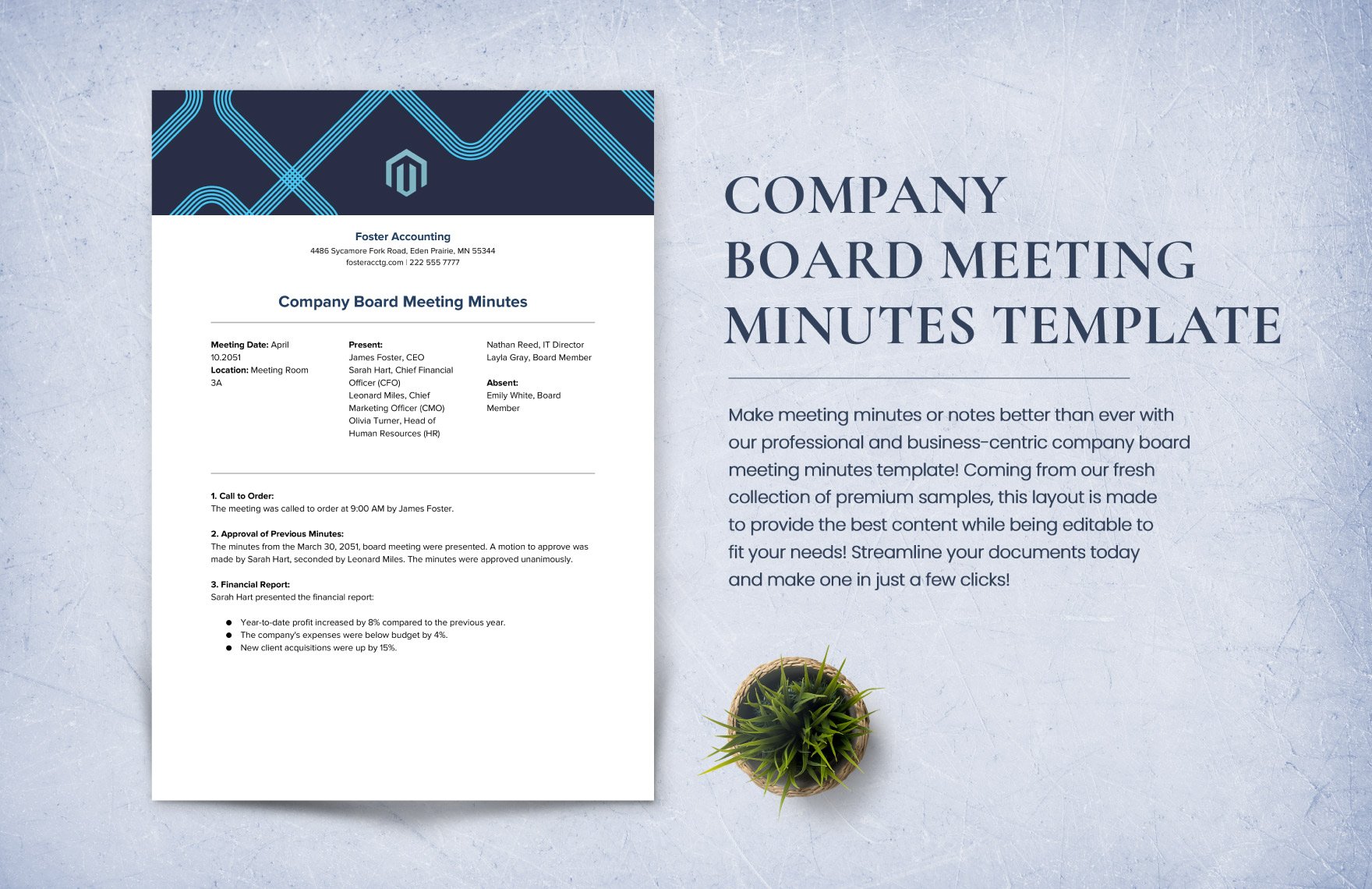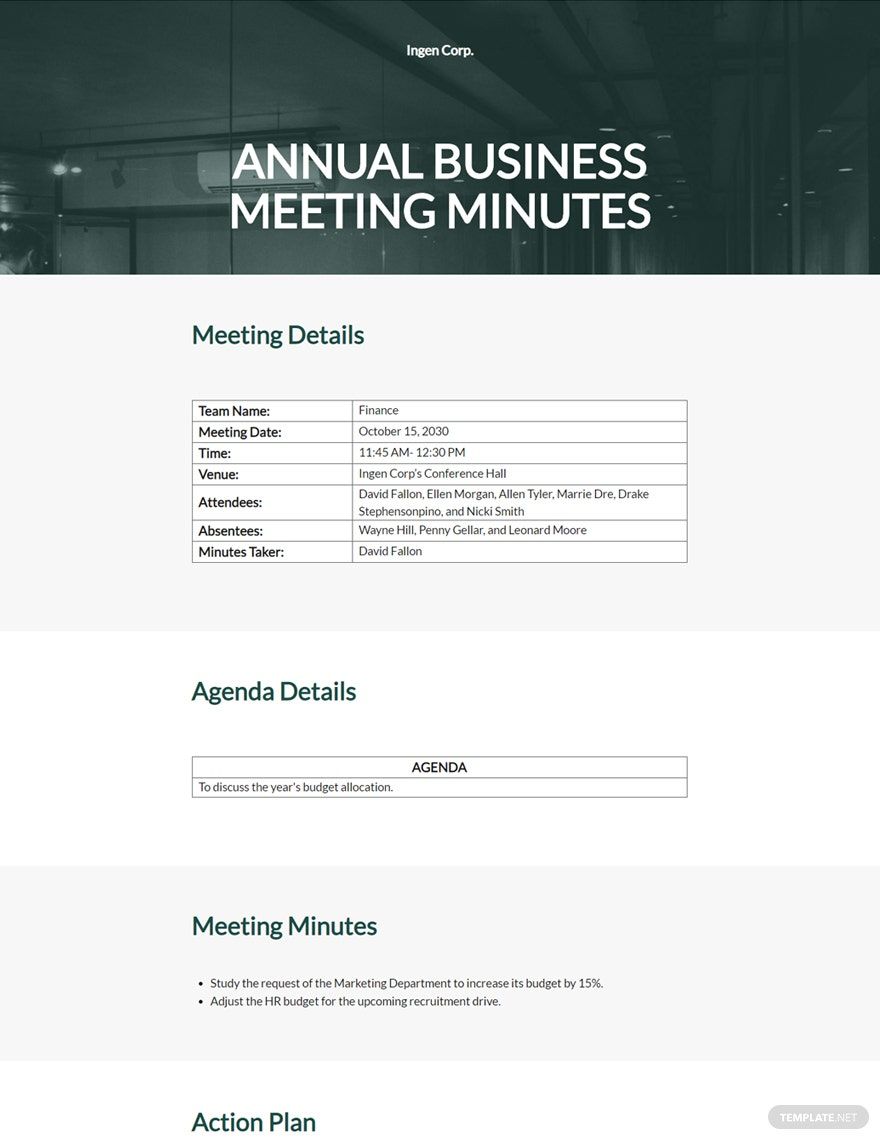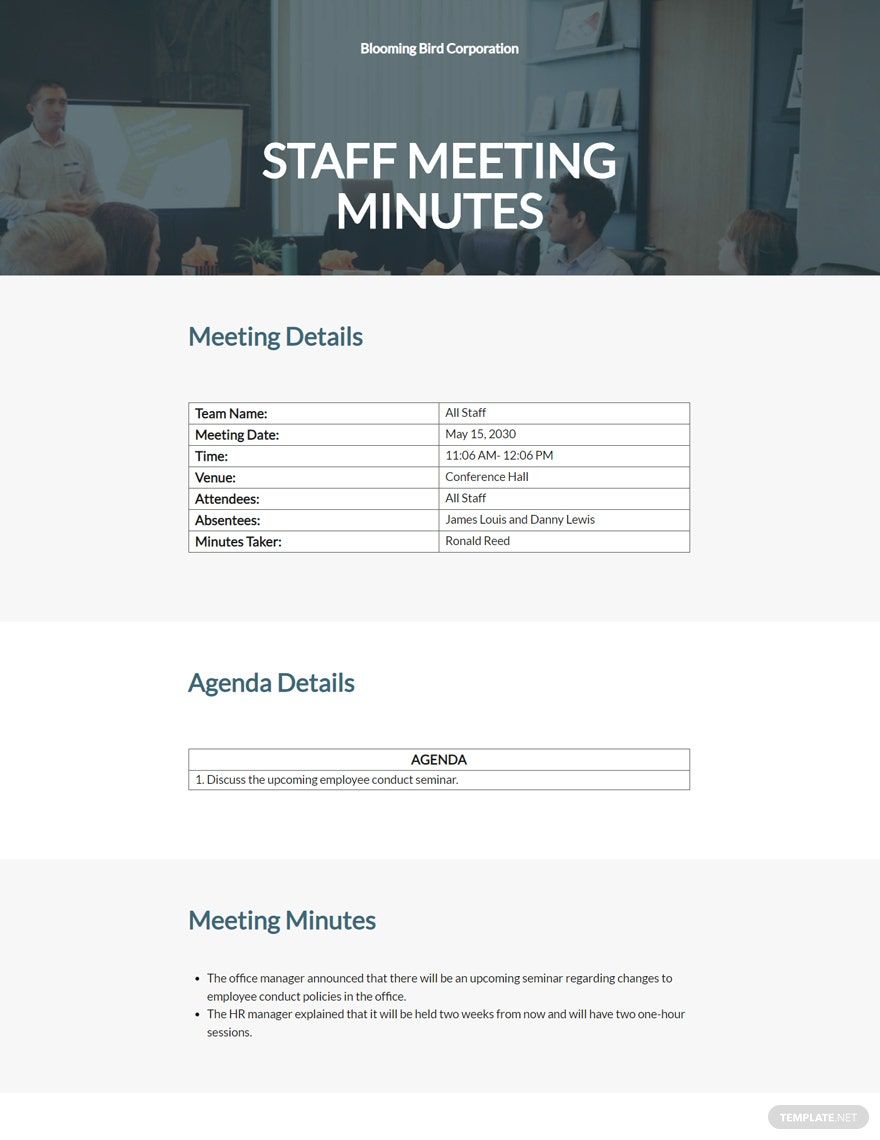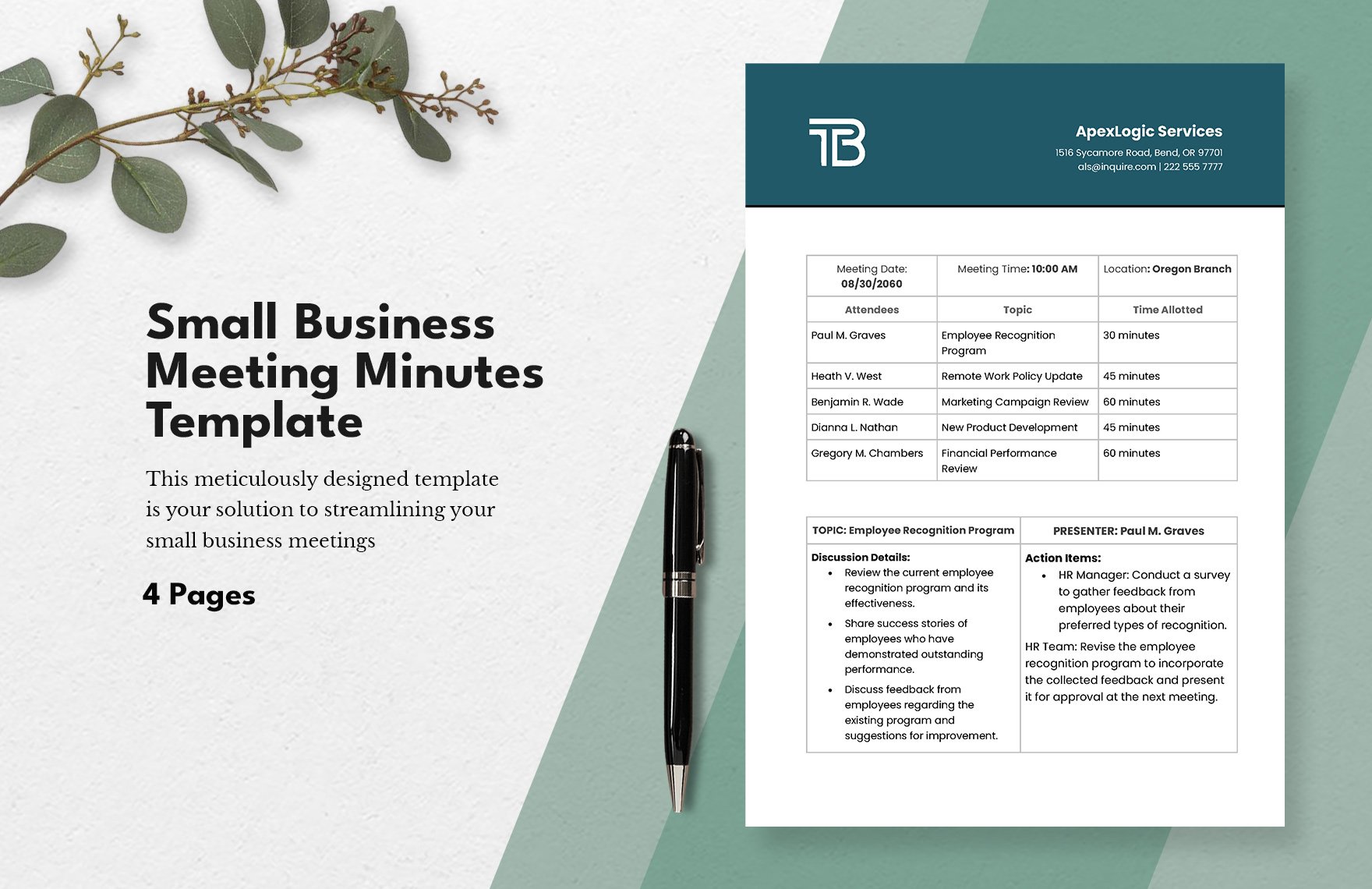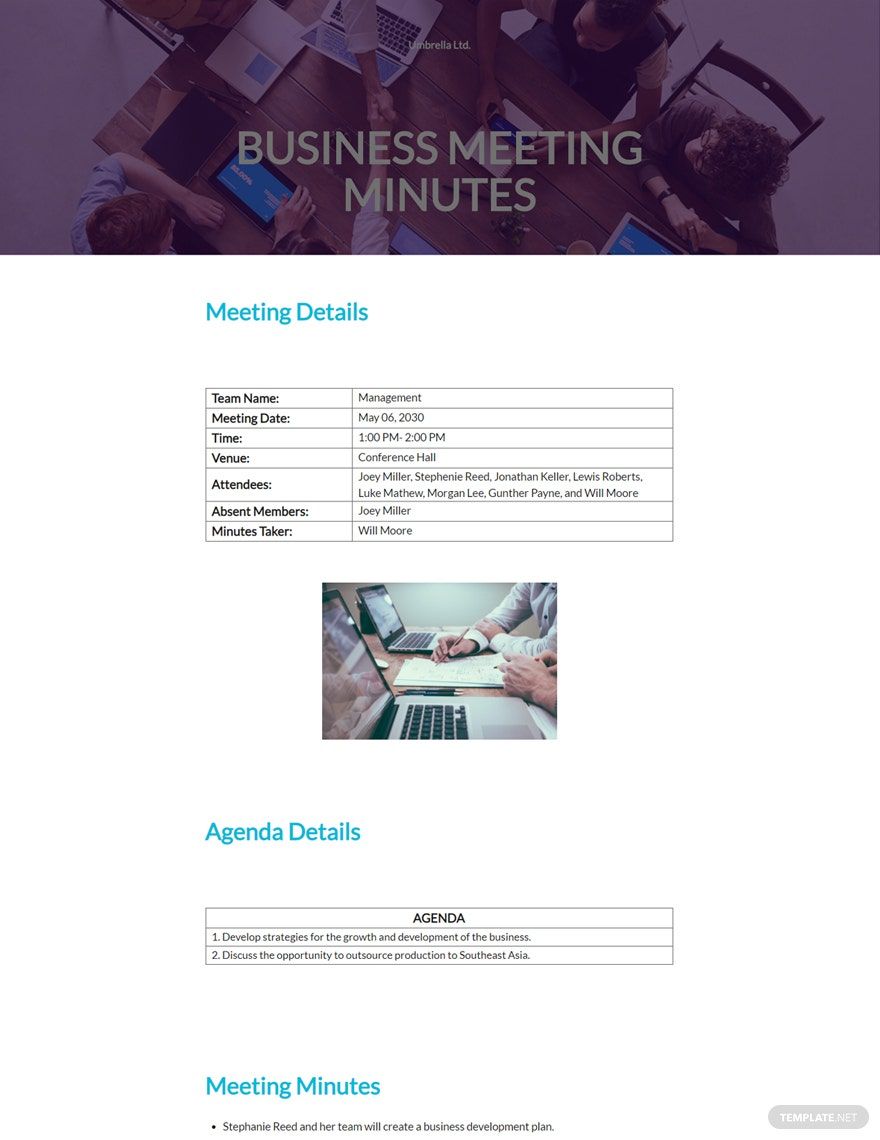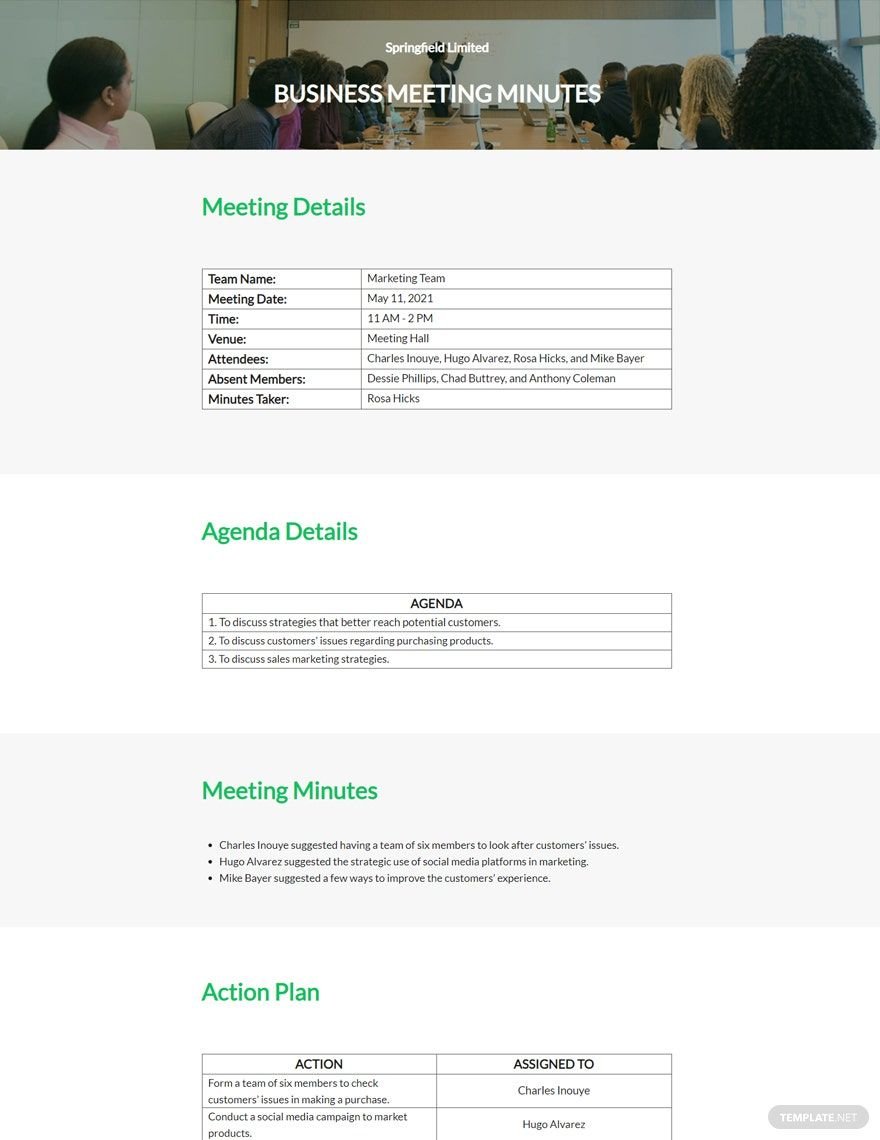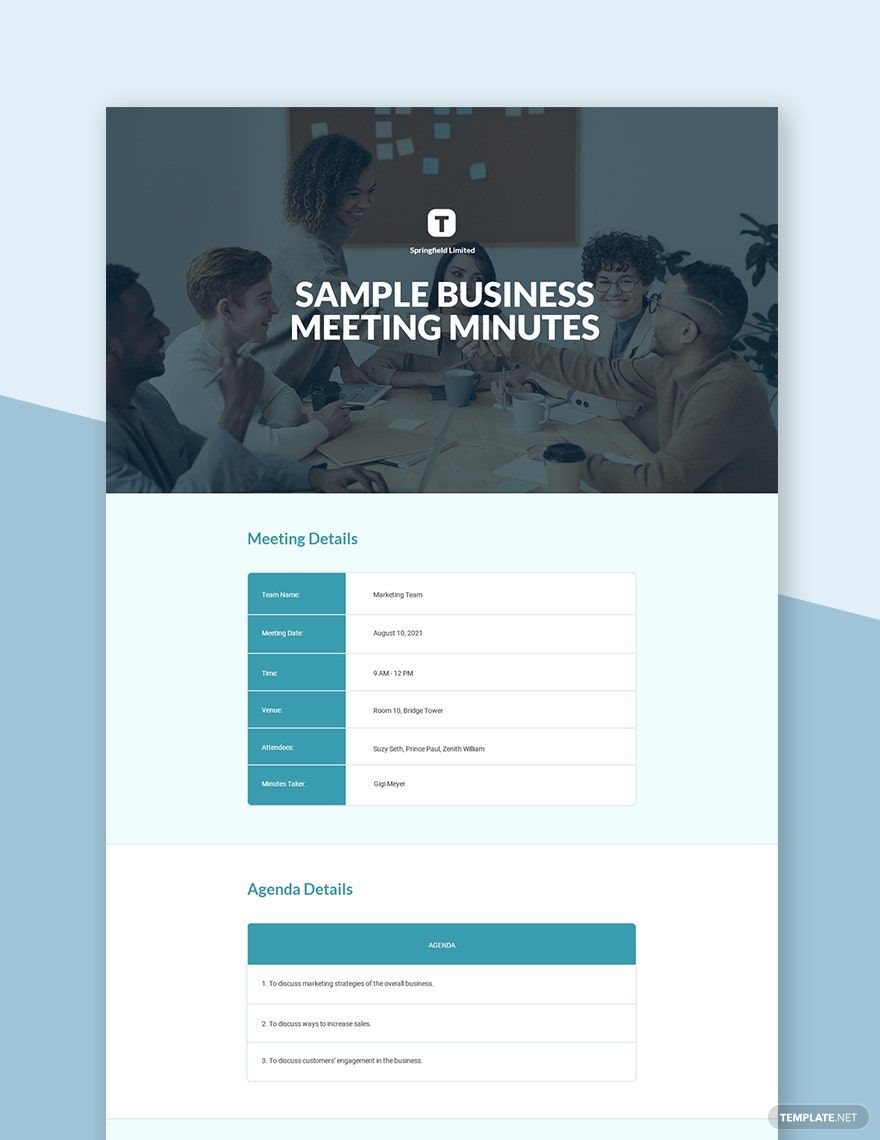If you’re managing a business, it’s imperative that you update yourself and your employees about the business’ status. Is it doing good? Or do you need to make changes? These topics are taken up during regular business meetings. Of course, to keep a record of the discussions, there should also be meeting minutes. Save yourself some slack by checking out our Business Meeting Minutes Templates. These are easily downloadable, 100% customizable, and fully printable. The tables are set and you simply need to replace the prewritten text with your own. Stop wasting your time and start subscribing to our templates!
What Are Business Meeting Minutes?
Business meeting minutes are notes written by an appointed person during a business team meeting. These notes include the names of the people present and important details discussed during the meeting.
How to Write Business Meeting Minutes
According to Learning Solutions, adults tend to forget 70% of new information after 24 hours. If not for meeting minutes, imagine how much information is forgotten after a meeting. For tips and guidelines in writing these notes, refer to the list below.
1. Prepare All the Tools Necessary
Taking down meeting minutes is a serious responsibility. The secretary or appointed minutes writer should be attentive and ready at all times. Speaking of ready, he or she should also prepare all the necessary tools for writing the minutes.
2. Check the Attendance of those Present
Aside from writing down details from the topics discussed, meeting minutes should also include a list of attendees. Write the names of those present and on a separate row, the absent employees. Lastly, write your name as the notes taker.
3. Keep Your Meeting Minutes Concise
If you’re the person tasked with writing the minutes, don’t write everything exactly as stated. Create an outline and focus on important matters. This will not only save you the stress of keeping up with the discussion, but it will also make it easier to read through your notes.
4. Arrange Your Meeting Minutes into Sections
One way to keep all your meeting notes organized is by creating sections on the document. Create sections for the agenda, suggestions brought up, approvals made, and unresolved matters. Arranging your notes into sections will help you become a more efficient notes taker.
5. Use a Voice Recorder if Needed
If you’re skeptical about not being able to catch up to the discussion, it’s absolutely fine to use a voice recorder. Include this in your checklist of tools to prepare. You can use either a mobile phone or a tape recorder. This way, you won’t have to worry about missing out on important details.
